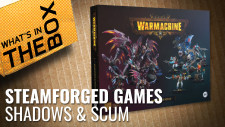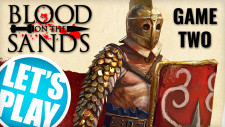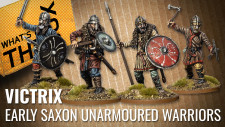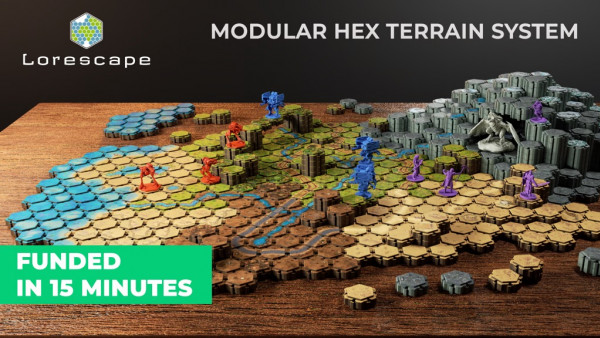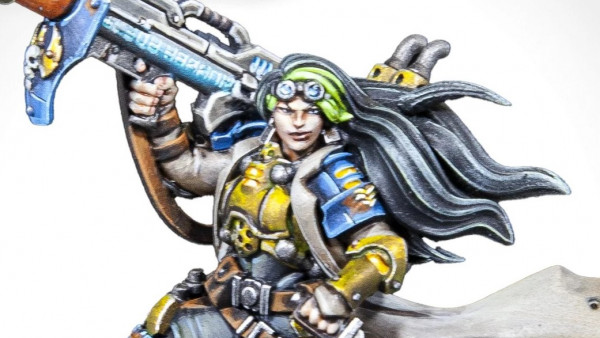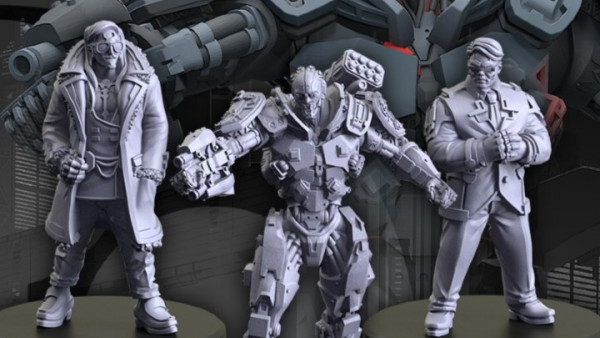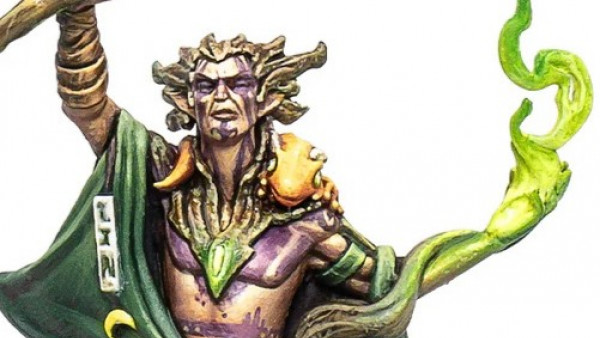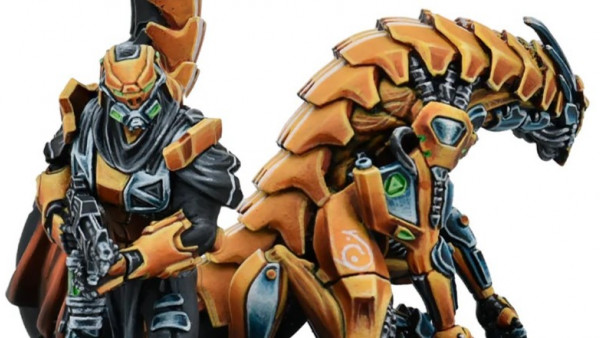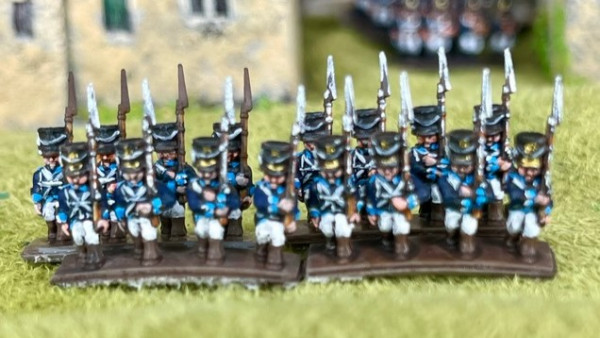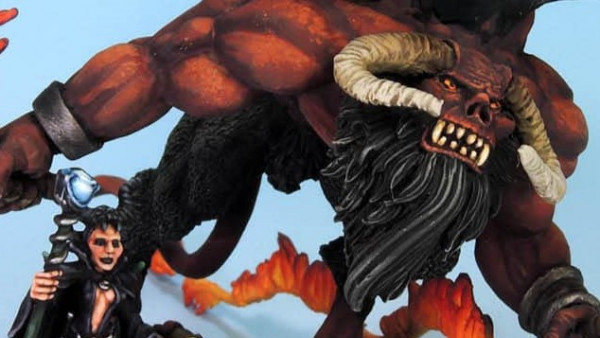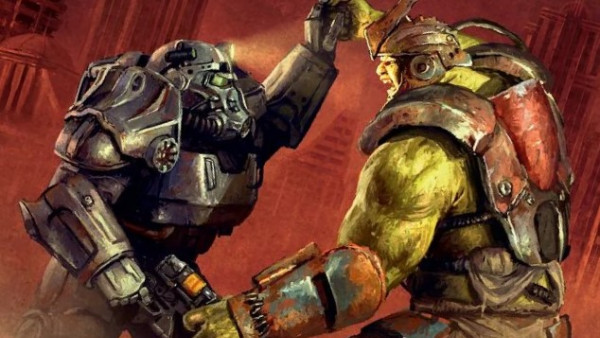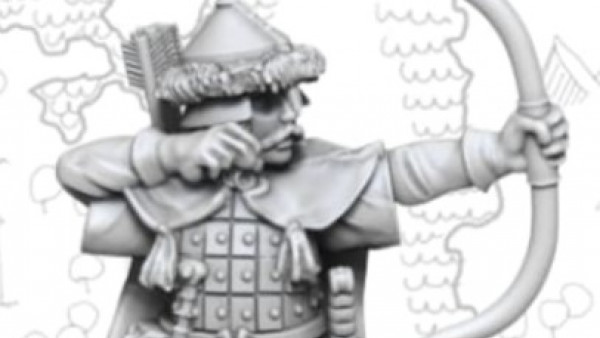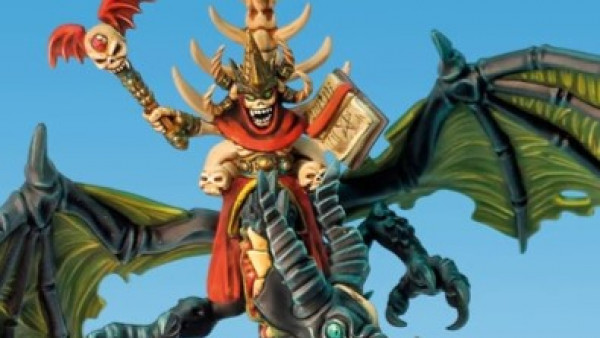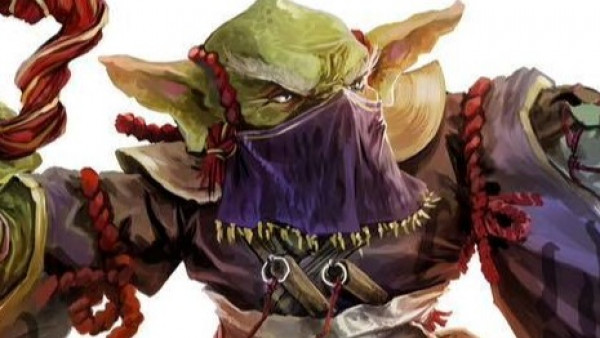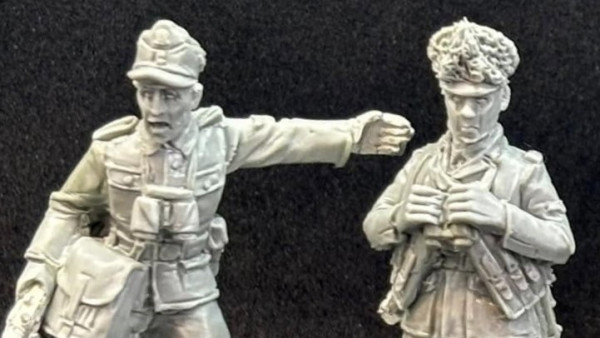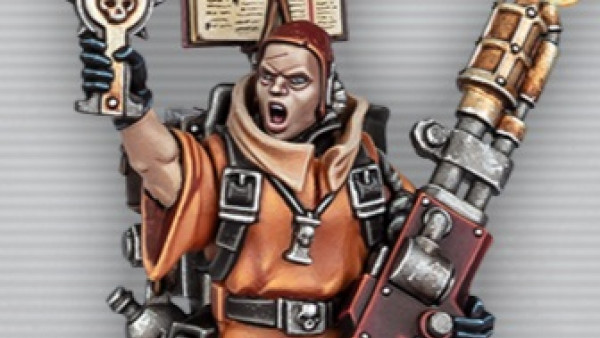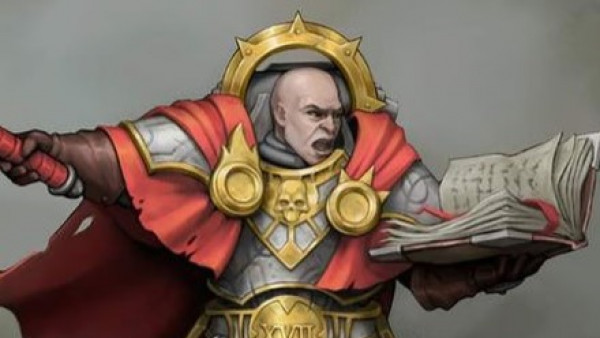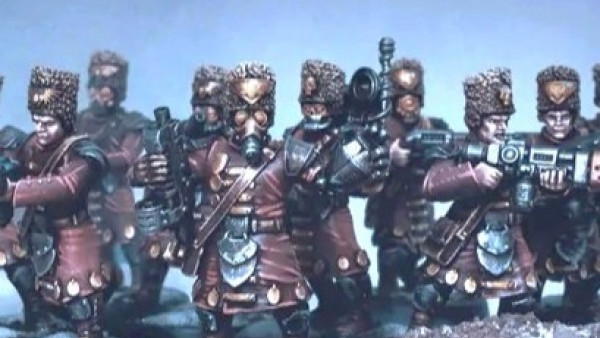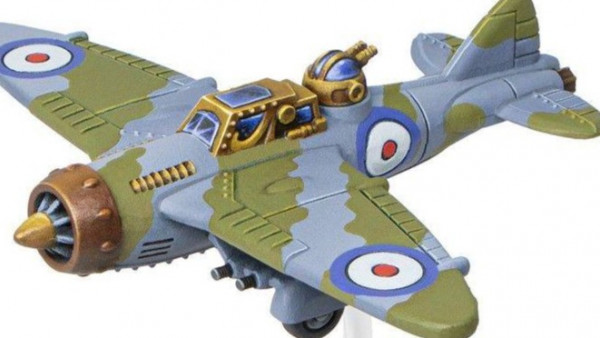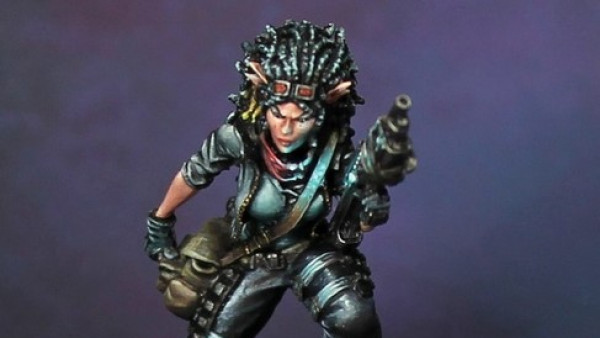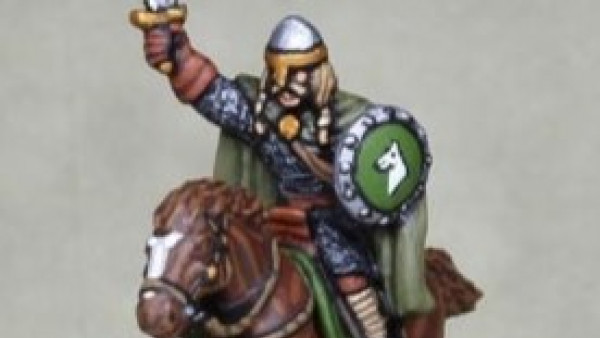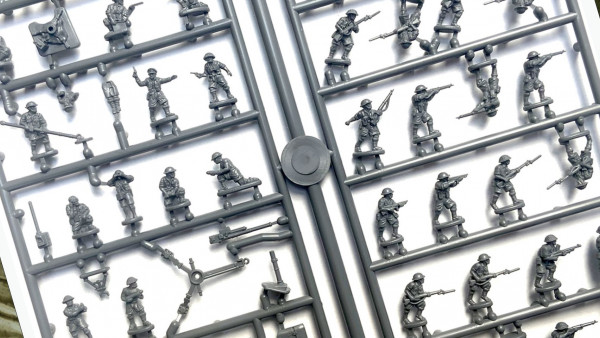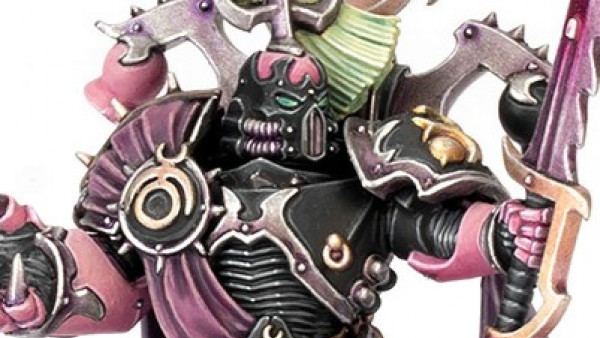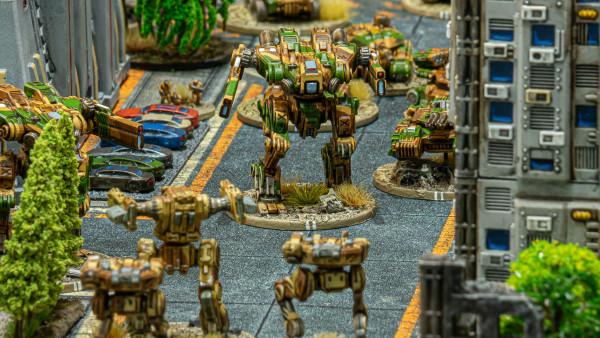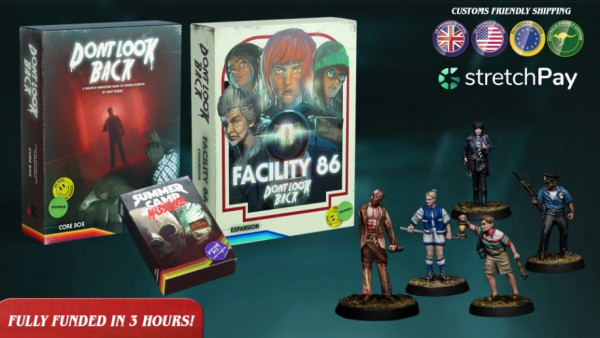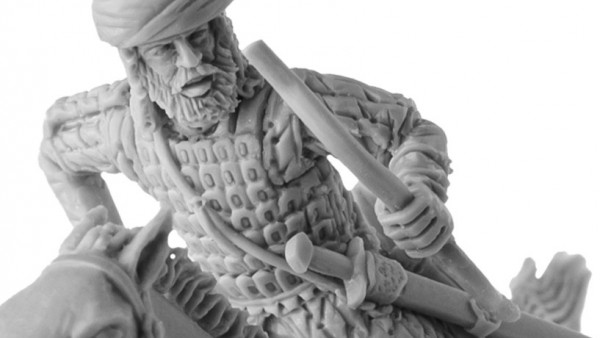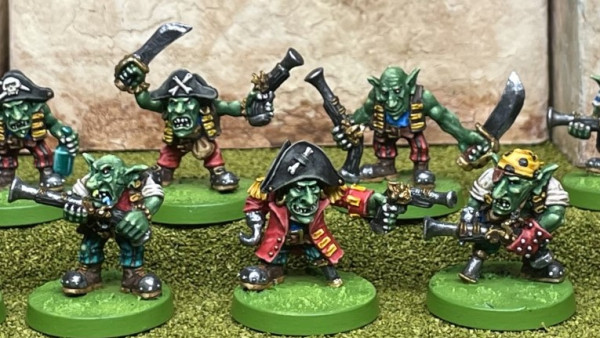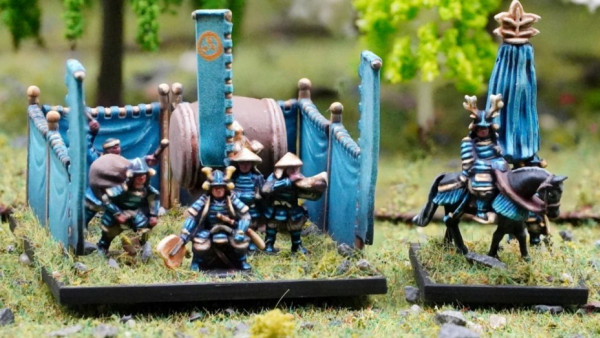Home › Forums › News, Rumours & General Discussion › Open gaming mini license
This topic contains 69 replies, has 14 voices, and was last updated by ![]() holly 1 year, 7 months ago.
holly 1 year, 7 months ago.
-
AuthorPosts
-
December 11, 2020 at 7:53 am #1589243
A thought about minis production as an industry occurred to me, with the advent of the 3D printer and the radical explosion of designs available to the market, are companies like GW still relevant?
Unless you have a specific 1 to 1 model match for game dynamics/function gaming is turning to being minis agnostic. The limiting factor of closed IPs is like Apple keeping a stanglehold on their customer base. Digital designers are creating more content in a shorter time than the development teams of established game companies and in some cases better aligned to the material that spawned the market for the designs.
Just like we’ve seen with 3rd ed. D&D that brought Pathfinder out of the OGL are metal/resin figures now the material of the grognard or connoisseur willing to pay greater sums over the cost of printed minis? Will a mini’s worth be measured in the weight of their material?
Realistically thats generally the underlying concept of where the GW, Reaper and Wizkids model production lies in their use of plastics. Now, people can have as many WHFB dragon riders as they want for a fraction of the price and weight from what GW used to put out with a mitigating factor of material cost and machine time(like mini CNC). The running comparison for a few episodes about the cost of Gargants came to mind as I considered really where our value comes in as gamers/hobbyists. Its all the extras that we are willing to extend our efforts before placing models on the tabletop/shelf. Hell, even then we shortchange each other without the backstory of how things came to be. In truth, that’s where these hobby projects earn their salt as foundation to viewing a process.
Back on topic, the future is open model rule sets and finding sculptors you want to support be they manual or digital. You can have great minis that are painted like crap and turds that are then polished and painted to become works of art but it will all boil down to usefulness. We like our micro commercial art pieces or high end playthings and the playing field literally really boils down to personal aesthetics (can’t forget terrain designers either).
December 11, 2020 at 8:33 am #1589244Some very good points. Once 3d printers develop until the point where they are able to print at the press of a button and not be as finicky as they are now, buying miniatures online or at a store will be of the past.
December 11, 2020 at 5:05 pm #1589358Once 3d printers develop until the point where they are able to print at the press of a button and not be as finicky as they are now, buying miniatures online or at a store will be of the past.
Not really a thing of the past but they will be more like vinyl record stores. Far and few between.
Also there will be sculptors that don’t want to make minis in 3D and will keep “classic casting”. Options! Great!
And I think there is already a sort of “open source” mini out there… a lot of people make great minis and put them out there for free. But again, as @rayboxgames says: until printers get drop dead simple, GW and Co. are safe 😉
December 11, 2020 at 5:32 pm #1589365Firstly I would say that 100% of historical gaming is figure agnostic. It can’t be anything else really.
As for 3D printers unless there comes a time where I can get a design , choose the scale I want , key in the number of them I want without having to add supports myself and having to mess about with printer settings and the printer can run without any real interference from the user then I’m not really interested
December 11, 2020 at 7:58 pm #1589403Nope … not gonna happen.
Yes, the technology is getting to the point we could do it. However I’d argue that technology has never been the problem that needed solving to begin with.
The problem is that the dinosaurs of the industry are not going down without a fight.
Just look at the record companies and the entire movie/tv industry.And all of that can be summed up in two words : money & control.
GW isn’t selling you a thing to use in games. They are selling you the entire hobby from start to finish.
They want/need you to buy everything and they will make it as convenient for you to do so.
3D printing only causes headaches as it lets their customers to break free of their chains, unless GW were to create a system that only printed their designs as and when they allow you to, using only their raw materials (like the inktjet printer manufacturers have done since day 1 … ). Kind of like they do with their paint system …I kind of doubt that the artists at GW & co get paid any royalties for their designs once the manufacturing begins.
The consumer only wants one thing : convenience.
We’ve been able to cast our own minis since the dawn of time. All you needed were the molds and some lead.
It’s easier and less messy than 3D printing … and yet it remained a niche hobby within our hobby. All you really needed were the molds . And as the quality deteriorates you had a good reason to buy more.3D printing makes it easier to get new things and it gives options to modify, but it isn’t the great equalizer even if we were to make it plug&play. It does not tie you into an eco-system, which is what a business ultimately wants to do as it makes it more difficult to jump ship to a competitor. Heck. The mini companies are doing that by not using standards for scales (28 mm vs 32 mm heroic vs whatever the heck Conquest is using). Never mind stylistic choices that make it diffiult to mix & match models (less a problem in historical games).
There’s a reason why sculptors choose to work for the likes of GW … not everyone is interested in the business side of producing and selling their own products. Financial security is a big motivator in all of this.
Part of the problems are solved with the various digital marketplaces for 3D-files, but you still have to market/advertise your products if you want it to be your primary source of money.Another challenge is that artists will have to find a way to get people to buy all of their products when there is nothing stopping said customer from selling a modified version of the files as their own product. In essence this means that in order to survive they need to be making new designs every day. You can’t make a hit design and watch the money roll into your piggy bank, because the industry has conspired to make it illegal to use part of your design without some sort of compensation.
Trying to fix this by adding DRM (digital restriction management) is a waste of resources as the ones who want to break that restriction have all the time and resources in the world. The only thing that helps is if the product is either crap or impopular or both.
oh … and here’s a challenge :
Suppose I use parts of 3 designs to create a single unique design and sell it as my own.
Who gets paid ?
Do the original designers deserve to be paid ?
And how big should a part be before it can be considered ?
An arm or a leg ?
Clothing ? Weapons ?
Hair ?We’ve yet to see anyone create a service that is as disruptive to this market as things like Uber and AirBnB were for theirs.
Heroforge is the only one … and they’re not doing any damage to the GW’s of the world.Trying to check copyright in the 3D design space is going to be a challenge (to say the least).
December 11, 2020 at 9:17 pm #1589410There are a few other things that are a consideration for me at least:
The level of detail on miniatures printed using ‘affordable’ 3D printers doesn’t look good enough to me, yet, compared to the level of detail on higher quality cast (if that’s the right term) miniatures.
3D printers take up a significant amount of space.
From what i’ve read 3D printers take a lot of time to print something and, from what i’ve read and seen, require some supervision.
I also suspect, thinking about it now, that 3D printers are a bit noisy.
Bear in mind that a lot of people are living in studios and one bedroom apartments and the like.
December 12, 2020 at 11:06 am #1589460> Firstly I would say that 100% of historical gaming is figure agnostic. It can’t be anything else really.
Agreed. Same with generic fantasy and Cthulhu, although, of course, derivative works can be IP’ed (eg. D&D and Chaosium’s Call of Cthulhu).
> As for 3D printers unless there comes a time where I can get a design , choose the scale I want , key in the number of them I want without having to add supports myself and having to mess about with printer settings and the printer can run without any real interference from the user then I’m not really interested
A lecturer on technology said technology has three phases, though obviously can be in more than one.
* Enthusiast : Enthusiasts are willing to put up with the jiggery-pokery and expense of the technology. Often, interest is in the technology itself, as much as the end product.
* Business : Companies seeking a competitive edge bring in money to the technology. Businesses are interested in the competitive advantage, not the technology itself, typically resulting in ease of use. Technology is still expensive, cost effective only for businesses.
* Consumer : Consumers are also only interested in the convenience of the technology, and are not willing to pay high costs or a high learning curve for it. This phase is often confused with the Enthusiast phase, because, in both, the end users are individual people.
3D printers are in the Enthusiast and Business phases. Enthusiasts are willing to adjust this, wait for that, assemble the unit themselves, put up with the fumes, that sort of thing. You may find a 3D printer in your dentist’s office, and even your car or appliance shop. (3D printing technology is already making contributions in medical use.) But it’s still going to be awhile before you can plug in a USB cable, get past installation, and pretty much only need to replace the cartridges.
Right now, 3d printer is already promising with RPG miniatures that they can create custom miniatures that are not cost-effective for mass-production. While wargames, by their very nature, often have multiple similar units (after all, that’s where the word uniform comes from), roleplayers thrive on the individuality of “their character”. HeroForge’s KS raised something like $40 per miniature for such custom miniatures. So companies, like GW, which tell you what miniatures to use, and tell you that you need a lot of them for your army, are better positioned against 3D printing, than, say, a generic RPG miniature company. (I’d add that, as shipping costs, VAT, sales taxes, customs fees, etc. increasing, that would put further incentive for printing-at-home.)
OTOH, There may be limits to what products we’ll see at the Consumer level, much like how we don’t have inkjet printers that make hardback books. We’ll certainly have them make anything you can make in plastic, but 3D printers using metal might be too expensive for their utility for personal use, and 3D printers for food (eg. edible decor) might be too specialized to be beyond business use.
3d printers in medicine : https://formlabs.com/blog/3d-printing-in-medicine-healthcare/
December 12, 2020 at 1:13 pm #1589479I remember when mp3s were first “a thing” and early adopters hit bulletin boards and sites like Napster and amassed massive free/cheap music collections.
Most people either hadn’t heard of it or were not tech-savvy enough to make use of it. Many people dismissed it as a “nerd fad”.
Fast forward nearly thirty years and now streaming mp3s on demand is the main method for accessing music.
I’d be very surprised us GW aren’t offering a monthly subscription based download for stls by the end of the 2020s.
Almost everyone I’ve heard saying there’s no future to 3d printing minis doesn’t actually own one and have little or no real life experience of printing their own minis (sharing only other non interested user reports of problems with storing resin, space used etc).
I’d have thought that if there’s one group of people willing to put up with a bit of mess, using glue and similar chemicals, and creating something awesome out of raw materials, it’d be miniature tabletop enthusiasts!
Is there anyone out there *who has (or has owned) a 3d printer* who believes it isn’t where the industry is heading?
December 12, 2020 at 3:54 pm #1589502I’d have thought that if there’s one group of people willing to put up with a bit of mess, using glue and similar chemicals, and creating something awesome out of raw materials, it’d be miniature tabletop enthusiasts!
That is true *but* it is also a complete hobby in its own right (3D printing I mean). And I know a lot of miniature wargamers who are… let’s say “not on friendly terms” when it comes to technology. The most they can do is read and write emails, whatsapp and look at forums and facebook groups. Some of them are interested in 3D printing but when it comes to “how to…” they hit a wall the minute they start looking into it and just don’t bother.
December 12, 2020 at 4:07 pm #1589510@torros – we’re almost there. Almost every miniature creator on Patreon, for example, is offering supported minis as part of their monthly release. There’s hardly an .stl-based Kickstarter now that *doesn’t* include supported minis.
@sundancer – I think maybe even as little as 18 months ago you might have been onto something (and those of us who have been involved with 3d printing for ten years or more know the headaches and heartaches that came with it).
But as a trial, I recently printed some supported minis from Cyber Forge.
Normally, I support myself, slice, double-check, remove islands etc. I can easily lose an hour or two before printing because I too have been super-wary of poorly supported models etc. Even just 12 months ago, it was a problem. But now? Yesterday I dropped eight minis onto Chitubox, hit slice and put the usb stick into my printer.
Four hours later – eight new minis were hanging upside down, waiting to be cleaned and cured.
Yes, it’s a *little bit more effort* than printing on an inkjet. But then again, if you want to print a really nice photo, you still do a little touching up and make it look it’s best, before printing – you *can* just hit print and accept what comes out, and it’s the same with 3d resin printing; it’s really getting very close to being so simple. In fact, I’d dare to suggest it already meets @torros ‘ criteria!
December 12, 2020 at 4:14 pm #1589511@sundancer – 3d printing *used to be* a hobby in it’s own right: I’d suggest that we’re reaching the point where it’s not any more – almost anyone can print minis on a decent (sub $400) 3d printer easily these days. It’s *nearly* as easy as using an inkjet (load a file, hit print).
And wargamers who refuse to engage with the changes? Well, they’re a bit like those who insist if it’s not a lead-pewter mini, it’s not really wargaming – they’ll just get left behind, as the industry moves on; a few niche suppliers will keep giving them what they want, with an ever-diminishing range of choice, while everyone else goes with the newer, better ways of modelling.
Nobody is forcing anyone to join in with new technology as it’s released. But at the same, time, a few naysayers are not going to be able to hold back progress either! 3d printing is the garlic bread of tabletop gaming. It’s the future 😉
December 12, 2020 at 4:20 pm #15895123d printing *used to be* a hobby in it’s own right: I’d suggest that we’re reaching the point where it’s not any more – almost anyone can print minis on a decent (sub $400) 3d printer easily these days. It’s *nearly* as easy as using an inkjet (load a file, hit print).
We’re close. Very close, but not just yet. There is still the bump for the non tech savvy. And those don’t put in time for nice photo prints. They take their smartphone or USB stick and go to the store where there is a photo printing station 😉
Garlic bread… hmm…… *drools*
December 12, 2020 at 4:48 pm #1589514Anyone old enough to remember Napster being a thing will also remember how the media industry hit back hard with lawsuit after lawsuit … until Napster became a shallow copy of its former self and the community moved onto different systems, which got hit by lawsuits.
Heck … the words ‘torrent’ are forever linked with ‘illegal’ downloads as opposed to being a really nifty technology to allow for fast downloads without the need for servers with a big fat internet connection ….
Yes … technology-wise we are getting very close to this being as ‘plug&play’ as it could possibly hope to be. Especially resin printers appear to be very good in that aspect.
I think we will really see what the future holds once Disney & co start to harass the websites that may or may not have copyrighted products in their catalog. And they will do so once enough people start downloading and printing them instead of buying them from the likes of FFG …
As for GW getting into this ?
I doubt they will, because they are pushing the ‘collectability’ aspect of the hobby more than the creative/DIY aspect.
Their fans/customers are not scared by the relative high prices of their products, because the branding and quality is there.December 12, 2020 at 4:58 pm #1589518But isn’t that kind of the point (about mp3s)? The music industry realised it had to embrace the technology or get left behind and miss out? It tried to fight it (with lawsuit after lawsuit) and eventually realised it had to get onboard or become irrelevant.
The primary argument – at the minute – against larger companies like GW embracing print-at-home is that there’s no way they can protect their IP from being copied (ok, the main argument being made here is that resin printing is too much hassle – but anyone who does print-at-home would recognise that this isn’t what’s really holding the technology back.)
GW may well stick to their “we sell collectables” approach to miniatures. But they’ll then become a niche market in a niche industry, rather than the driving force. Personally, I don’t see them remaining happy with that.
December 12, 2020 at 5:25 pm #1589524Professional 3D printer shops as the mainstay might be the outcome rather than home printing. There’s already something of a 3D printer shop cottage industry. If the quality, speed and cost combination were right i could imagine Games Workshop stores becoming 3D printer shops with employees trained in professional 3D printing, enabling a customer to order their (3D printed) miniatures online and either have them delivered or collect them from the store just as soon as they’ve been printed at that store on the same day.
One of the things that tempts me most about 3D printing is the possibility of designing miniatures myself. There is a middle ground here with the possibility of modification of miniature designs. I could imagine Games Workshop doing something along the lines of Hero Forge’s custom miniatures, giving customers the options of additional details and equipment, heroic or realistic (or even chibi) proportions, and even a range of scales.
-
AuthorPosts
You must be logged in to reply to this topic.





























